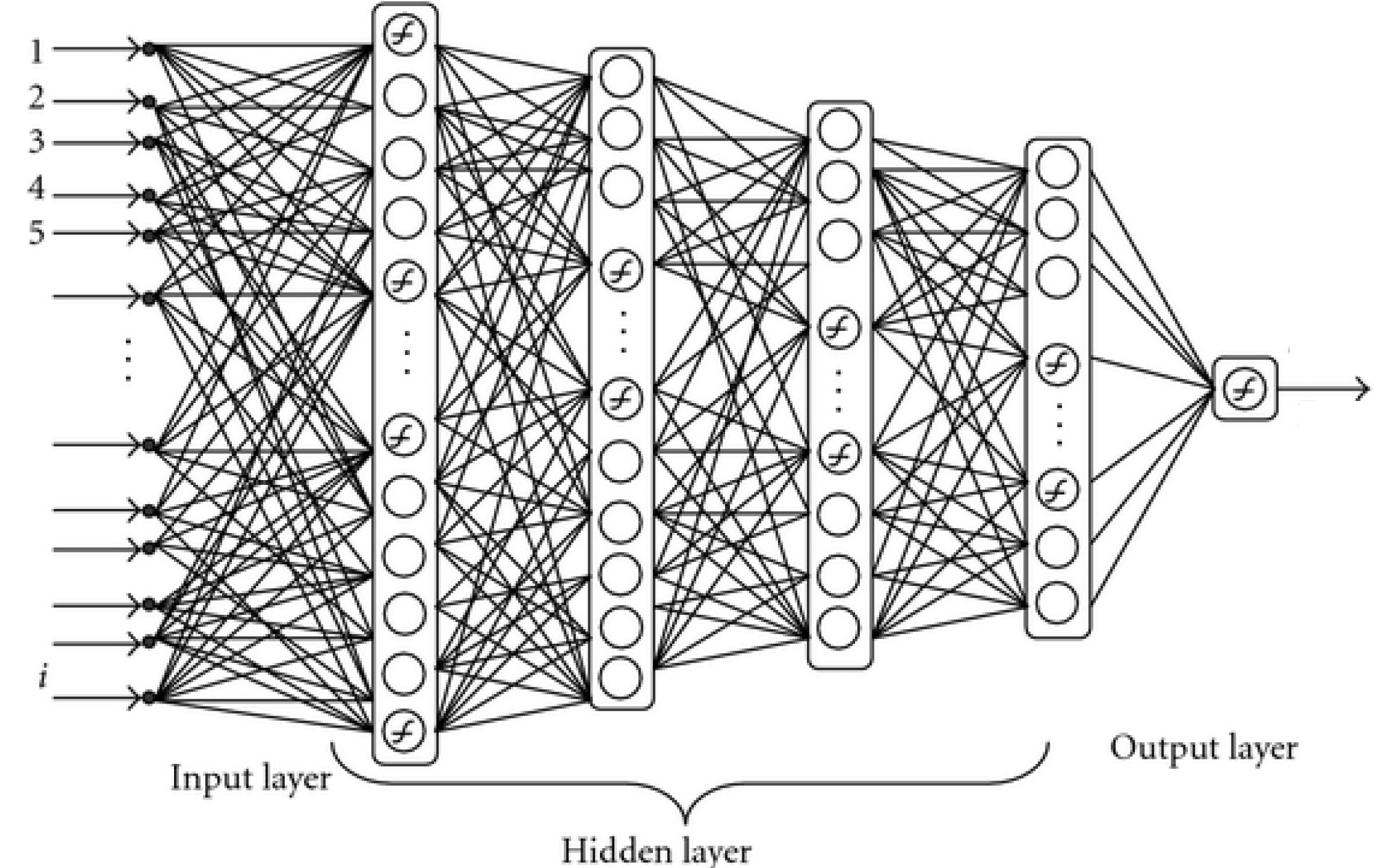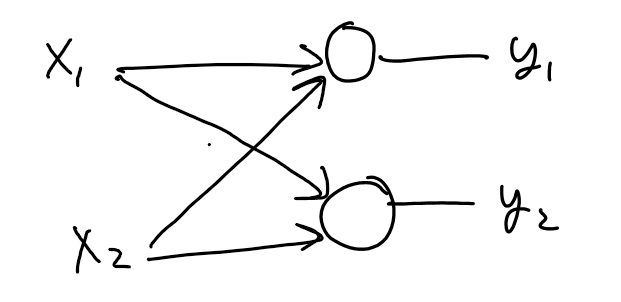Hacking Math I
Spring 2020

Topic 4: Advanced Functions
This topic:¶
- Activation functions
- Vector functions
- Linear functions
- Compositions and diagrams of functions
Reading:
- I2ALA Chapter 2 (Linear functions)
I. Activation functions¶
Recall Python functions¶
def f(x): # <--- def keyword and colon after name and arguments
return x**2 # <--- return output
y = f(4)
print("y =",y)
y = 16
Scalar-valued Function $f(x)$ for scalar input $x$¶
- inputs $x \in \mathbb R$, the Domain of $f$.
- targets (function values) $f(x)$, the image/codomain of $f$
This says
- $f$ is a mapping from $\mathbb R$ to $\mathbb R$
- $f$ assigns every input scalar $x$ to exactly one output scalar $f(x)$
(recall we are exclusively working with real numbers in this class)
Activation functions¶
An artificial neuron is "on" or "off" depending on its inputs
This on/off behavior is modeled with the activation function, a scalar funtion of a scalar input
Popular functions, in historical order
- step function
- sign function
- logistic function
- rectified linear unit
Exercise: code these in python
Exercise: convert a step function into a sign function and vice versa
Logistic Function¶
$$f(z) = \frac{c}{1+e^{-a(z-z_0)}}$$$a$, $c$, and $z_0$ are constants.
Sigmoid Activation Function = Special case of Logistic function: $c=1$, $z_0=0$, $a=1$ (typically)
Exercise: code in python
Rectified Linear Unit¶
$$ \text{ReLU}(z) = \alpha \max(0,z)= \begin{cases} 0, \text{ if } z < 0 \\ \alpha z, \text{ if } z > 0 \end{cases} $$The activation function that was popular when Deep Learning became famous.
Not smooth but gradient still simple to do computationally.
Variants such as "Leaky ReLU" improve implementation details.
Exercise: code in python
II. Vector Functions¶
Function $f$¶
Relates two quantities together
- inputs $x \in \mathbb R^D$, the Domain of $f$.
- targets (function values) $f(x)$, the image/codomain of $f$
This says
- $f$ is a mapping from $\mathbb R^n$ to $\mathbb R^m$
- $f$ assigns every input vector $x$ to exactly one output vector $f(x)$
(recall we are exclusively working with real numbers in this class)
Univariate function¶
\begin{align} f:\mathbb R &\rightarrow \mathbb R \end{align}Examples:
- most functions probably: $\sin,\cos$, $\log,\ln,\exp$, $x^n, \sqrt{x},...$
- activation functions
Scalar-valued Function of Vectors¶
\begin{align} f:\mathbb R^n &\rightarrow \mathbb R \end{align}$$f(x) = f_1(x_1,x_2,...,x_n)$$Example¶
\begin{align} f:\mathbb R^4 &\rightarrow \mathbb R \end{align}$$f(x) = x_1 + x_2 - x_4^2$$What is $x$?
Example: the Sum function¶
$$x_1+x_2+...+x_n$$What is $x$?
The inner product function¶
\begin{align} f:\mathbb R^n &\rightarrow \mathbb R \end{align}$$f(x) = f_1(x_1,x_2,...,x_n) = a^Tx = a_1x_1+a_2x_2+...+a_nx_n$$Think of $x$ as the variable and $a$ as a vector of fixed parameters
Suppose both $x$ and $a$ were viewed as variables, what is $f$? ($\mathbb R^? \rightarrow \mathbb R^?$)
Linearity of inner product function¶
$$f(x) = f_1(x_1,x_2,...,x_n) = a^Tx = a_1x_1+a_2x_2+...+a_nx_n$$- $f(x+y) = ?$
- $f(\alpha x) =?$
Linearity of inner product function - converse¶
any linear function $\mathbb R^n \rightarrow \mathbb R$ can be described as an inner product
Exercise: prove by using linearity assumption to expand $f(x_1e_1+..+x_ne_n)$.
Affine Function¶
\begin{align} f:\mathbb R^n &\rightarrow \mathbb R \\ f(x) = a^T x + b, \, & a\in \mathbb R^n, b\in \mathbb R \end{align}A linear function with an offset
Exercise¶
consider $a = \begin{pmatrix}2\\1 \end{pmatrix}$, and $b=1$
Draw the linear function $f(x)=a^Tx$ and the affine function $f(x)=a^Tx+b$
Exercise: Regression¶
- We have data for drug dosage and resulting blood concentration of drug.
- We want a model to help us predict how much dosage to give to achieve a desired blood concentration.
print ("dosage = "+str(np.round(dosage,2)))
print ("blood concentration = "+str(np.round(conc_noisy,2)))
plt.scatter(dosage, conc_noisy, color='black', linewidth='1.5');
dosage = [ 0. 166.67 333.33 500. 666.67 833.33 1000. ] blood concentration = [17.06 31.89 35.01 34.18 65.33 79.27 47.47]
Univariate vector-valued function $f(x)$¶
\begin{align} f:\mathbb R &\rightarrow \mathbb R^m \end{align}$$ f(x) = \begin{pmatrix} f_1(x) \\ f_2(x) \\ \vdots \\ f_m(x) \end{pmatrix} $$- $x$ is a scalar
- $f(x)$ is a vector
Multivariate vector-valued function¶
\begin{align} f:\mathbb R^n &\rightarrow \mathbb R^m \end{align}$$ f(x) = \begin{pmatrix} f_1(x_1,x_2,...,x_n) \\ f_2(x_1,x_2,...,x_n) \\ \vdots \\ f_m(x_1,x_2,...,x_n) \end{pmatrix} $$II. Function compositions¶
Exercise: make two python functions to implement the following function composition
- $h(x) = g(f(x))$
- $f(x) = \exp(x)$
- $g(y) = y^2$
Compute $h(4)$
Example: Perceptron Function¶
- input of some size
- weights
- Activation function
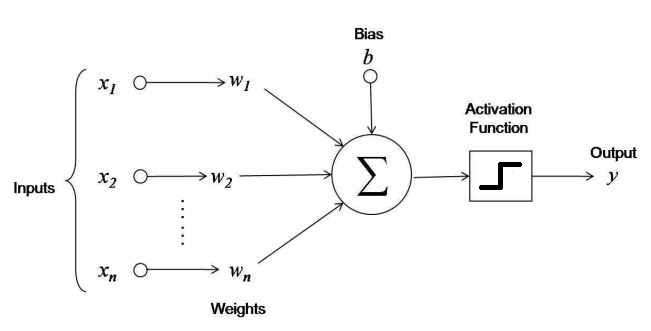
Describe as a composition of simple functions
Consider the output regions for this network (given parameters):¶
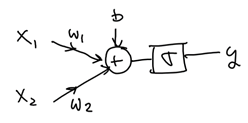
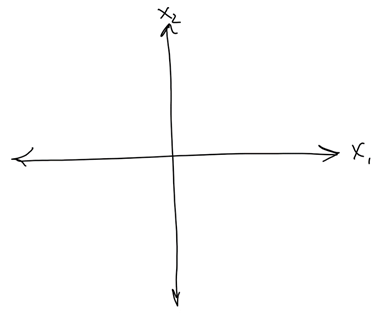
What values can $y$ be? where are those values taken?
What is the function?¶
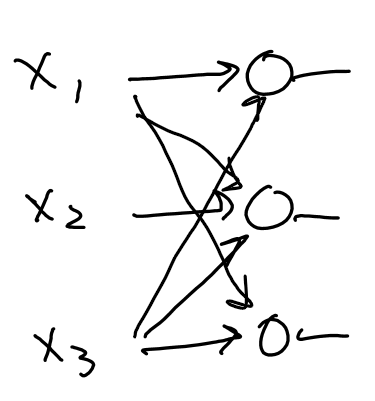
Example: Deep Neural Network¶
- Make a function for a single neuron
- Make function for a layer
- Make a composition of layers
